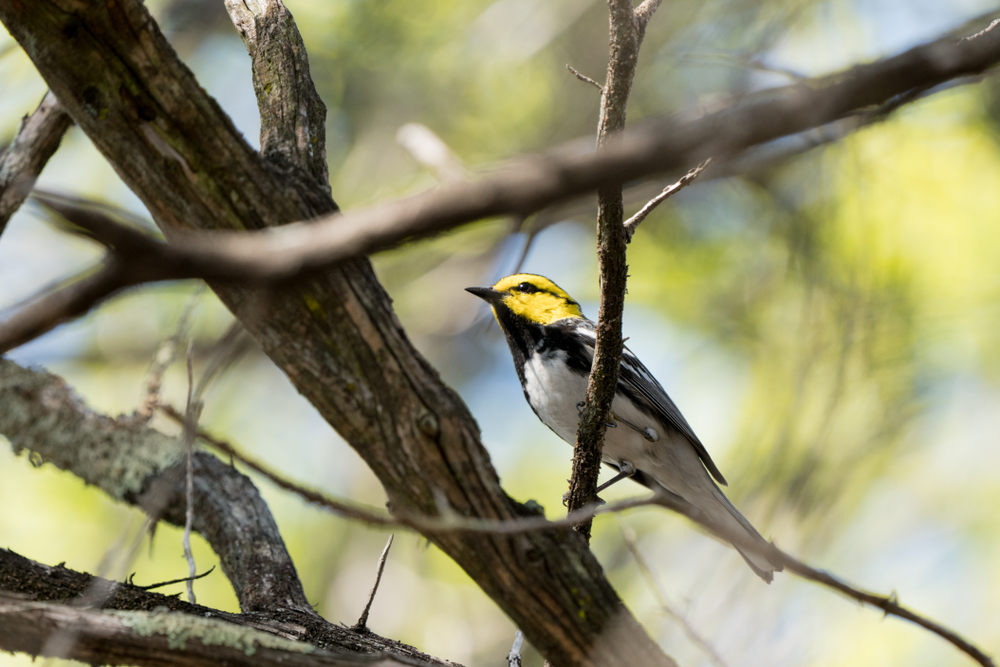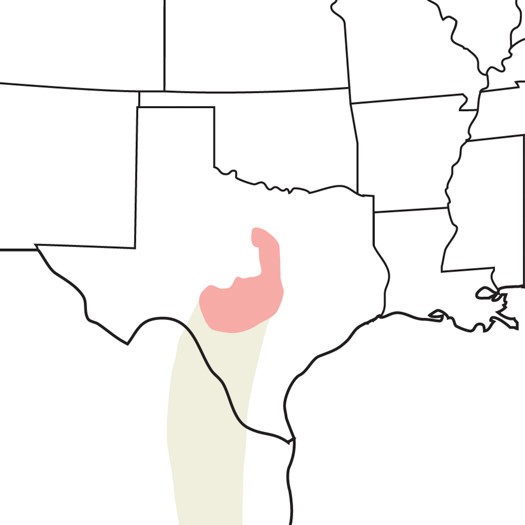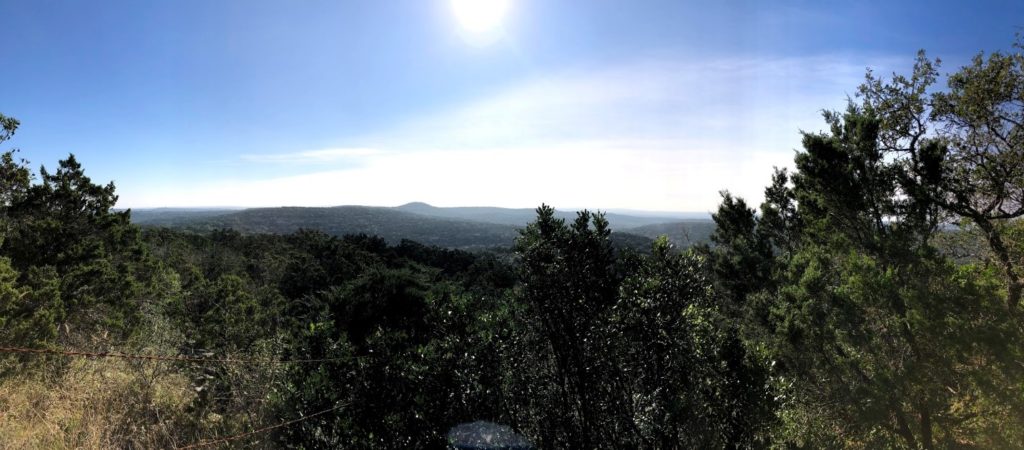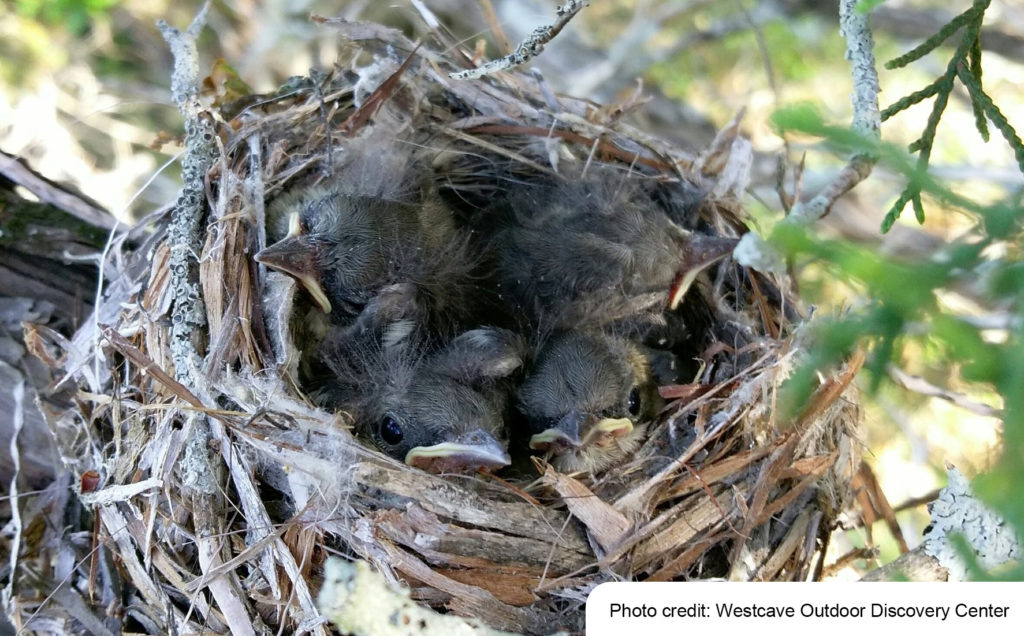
The Golden-cheeked Warbler (Setophaga chrysoparia; GCWA), named for the distinctive yellow plumage on its face, is a migratory bird species that is endemic to the Edwards Plateau and the central Texas Hill Country. This species travels to Texas from its wintering grounds in Mexico, El Salvador, Honduras, Nicaragua, and Guatemala every March to breed and nest exclusively throughout central Texas before departing again in early August. It breeds and nests within 33 counties throughout central Texas, as generally depicted in the following map.

Bexar, Travis, and Williamson Counties account for a few of the largest cities in the country (e.g. San Antonio and Austin, TX) where this species may be found.
Suitable GCWA habitat includes woodlands with mature Ashe juniper in a natural mix with oaks, elms, and other hardwoods with dense tree canopy, in relatively moist (mesic) areas such as steep canyons and slopes, and adjacent uplands. Mature Ashe juniper trees are at least 15 feet in height with a trunk diameter of about five inches at four feet above the ground (dbh). These areas generally will have a nearly continuous canopy cover of trees with 50-100% canopy closure and an overall woodland canopy height of 20 feet or more. This habitat type is also important for deer, turkey, other songbirds, and a variety of other wildlife due to the diversity of vegetation and topography and, in many cases, proximity to water.

The GCWA may occupy habitat patches as small as perhaps 50 hectares. Nests usually are in upright forks of mature junipers, about 5-30 feet above ground. Sloughed juniper bark is an important nesting material. They strip this bark to create the base structure and then decorate with eye-catching materials like cobwebs and tufts of animal fur. Both males and females tend to return to the previously occupied nesting territory.

Habitat loss or degradation, such as juniper eradication programs and urbanization, has historically contributed to the GCWA’s decline. In 1990, the species was listed as federally “endangered” by the U.S. Fish & Wildlife Service (USFWS) under the Federal Endangered Species Act (ESA) of 1973. This designation means it is in danger of extinction throughout all or a significant portion of its range.
As a result of this federal designation, public and private entities alike are responsible for ensuring no ‘take’ of this species.
The term 'take' means to harass, harm, pursue, hunt, shoot, wound, kill, trap, capture, or collect, or to attempt to engage in any such conduct.
Along with the ESA, the Migratory Bird Treaty Act (MBTA) provides additional protection for this species. Under the MBTA, taking, killing, or possessing migratory birds is unlawful. Any project activities must be conducted outside of the migratory bird breeding period to avoid destruction of individuals, nests, or eggs; otherwise, these activities are subject to further consultation with the USFWS.
As a project owner, consulting with the USFWS under Section 7 of the ESA can be time-consuming and affect project schedules. Fortunately, some communities such as Williamson and Bexar Counties have established Regional Habitat Conservation Plans (RHCP) to help meet the needs of both human population growth and habitat conservation. In addition, private GCWA conservation banks are available in some areas.
Some USFWS-approved species conservation banks include:
- Bandera Corridor Conservation Bank
- Festina Lente Ranch Conservation Bank
- Camp Wood Conservation Bank
- Clearwater Ranch Conservation Bank
- Hickory Pass/Ridge Conservation Banks
- Hays County Regional Habitat Conservation Plan
- Southern Edwards Plateau Habitat Conservation Plan
- Williamson County Regional Habitat Conservation Plan
These banks help facilitate development by allowing owners to minimize or mitigate impacts to the species and fund GCWA conservation, without the need for extensive federal agency consultation.
Raba Kistner Environmental Scientist, Alex Ramirez, holds the appropriate U.S. Fish & Wildlife scientific research and recovery permit for the GCWA, which allows him to conduct presence/absence surveys for this species following the agency’s Section 10(a)(1)(A) Scientific Permit Requirements for Conducting Presence/Absence Surveys and Habitat Assessments for Endangered Golden-cheeked Warblers.
Mr. Ramirez has led GCWA studies (habitat determinations and presence/absence surveys) for development projects and habitat conservation plans throughout Central Texas, and has prepared appropriate biological reports supporting agency consultations.
Raba Kistner is ready to guide you in evaluating your property for potential GCWA or other protected species habitat. Contact Sam Blanco ([email protected]; 210.699.9090) to discuss your next project.












